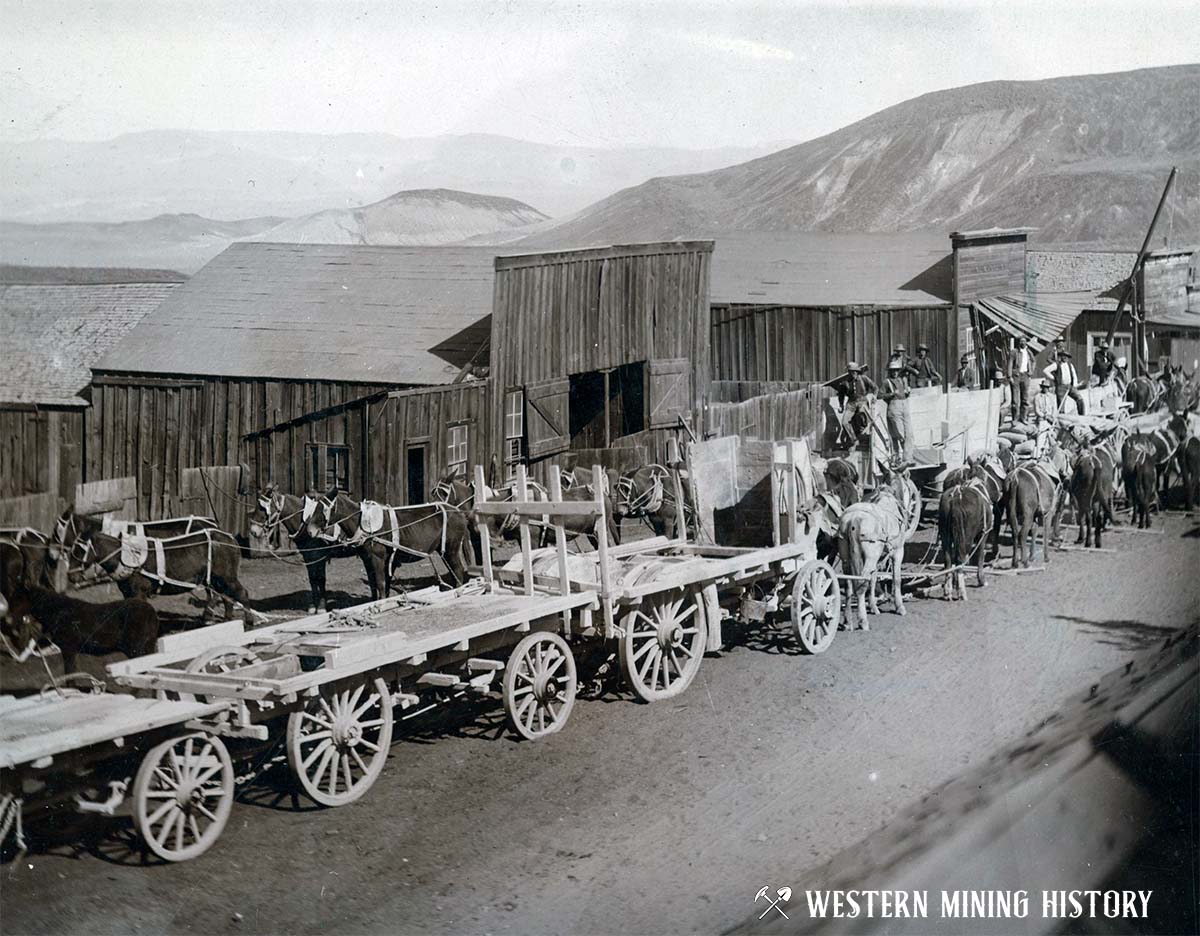Candelaria History
Candelaria, located approximately 6.5 miles west of US 95 and 16 miles south and east of Mina in Mineral County, was the center of a historically significant silver mining district in southwestern Nevada.
The Candelaria District, first referred to as the Columbus District, emerged after discoveries made by Mexican prospectors in 1864. Its most prominent mine, the Northern Belle, was initially discovered in 1865 but underwent a period of neglect before being relocated in 1870.
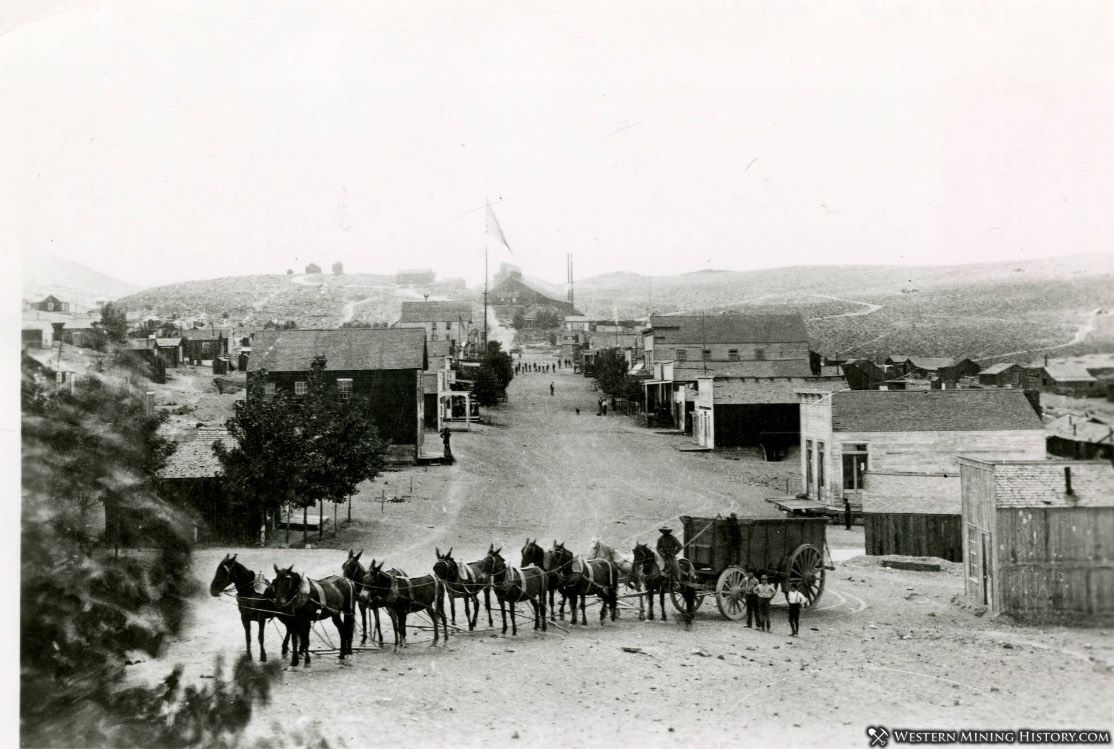
Located on the edge of a marsh approximately 5 miles southeast of the silver mines, the town of Columbus served as the early center of the district. However, when the silver mines gained significance in 1876, a new settlement named Candelaria was established closer to the mines. A second town, Metallic City (also known as Pickhandle Gulch), was established nearby.
The first mill in the district was located at Columbus, but as the mines began producing larger quantities of ore, a 20-stamp mill was built at Belleville in 1873, located 8 miles west of the mines at a spot with easier access to water and more conducive to the operation of large mills. A second 20-stamp mill was constructed at the same location the following year. Milling also occurred at Soda Springs (Sodaville).
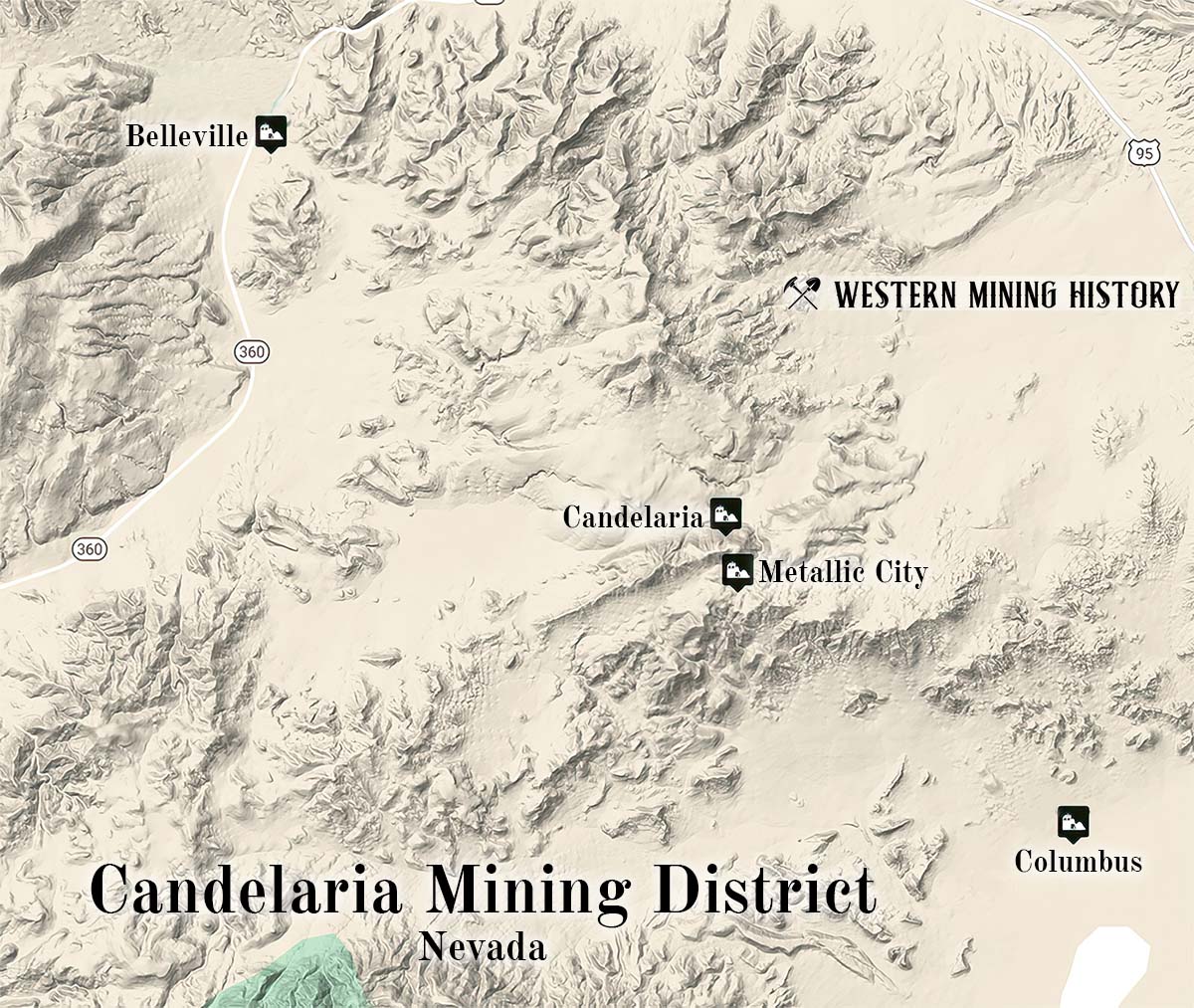
The Northern Belle Mine commenced paying dividends in 1876, with annual production of one million dollars each year for the following decade. The Mount Diablo Mine emerged as another strong producer, generating dividends starting in 1883.
By the fall of 1876, Candelaria was a booming town, boasting a post office, two hotels, restaurants, 11 saloons, livery stables, and various other businesses. However, the isolated location of the town necessitated freight to be transported from Wadsworth, a distance of 120 miles, leading to exorbitant prices for most goods. Alkali-laden water, hauled over from Columbus, cost 4.5 cents a gallon and a bath cost two dollars.
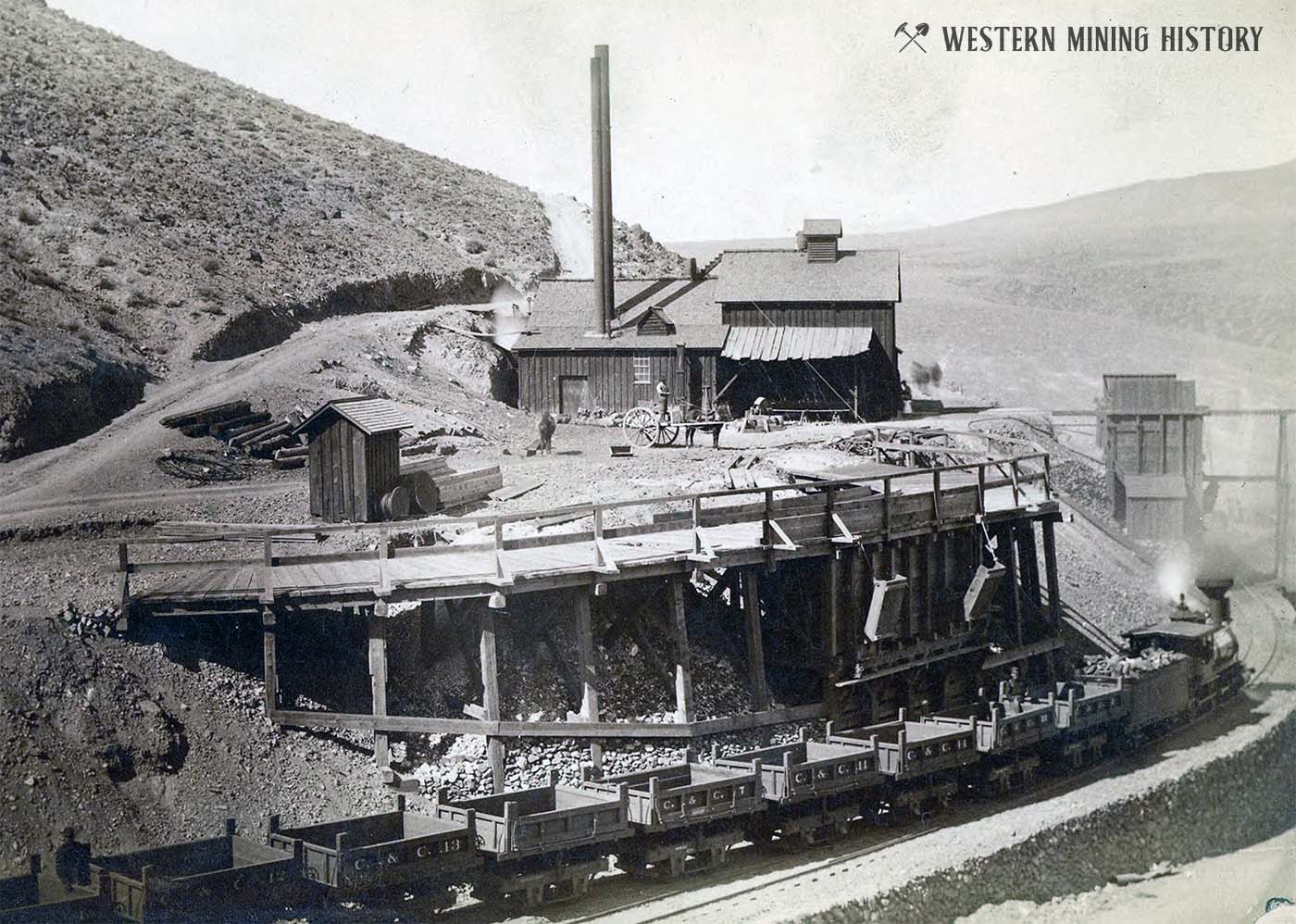
One newspaper described Candelaria's water situation in December of 1881 "The absence of water supply in Candelaria has been an almost insurmountable obstacle to the development and working of its veins of rich ore.." but goes on to say that the situation was about to be remedied by a twenty-five mile long pipeline that would transport water to Candelaria from the White Mountains.
The article also notes that the completion of the pipeline will even be "beneficial to liquor sellers, who find it now unprofitable to 'water their stock'". After completion of the water works in early 1882, which included a 500,000 gallon reservoir above the town, a 30-stamp mill was built at Candelaria.
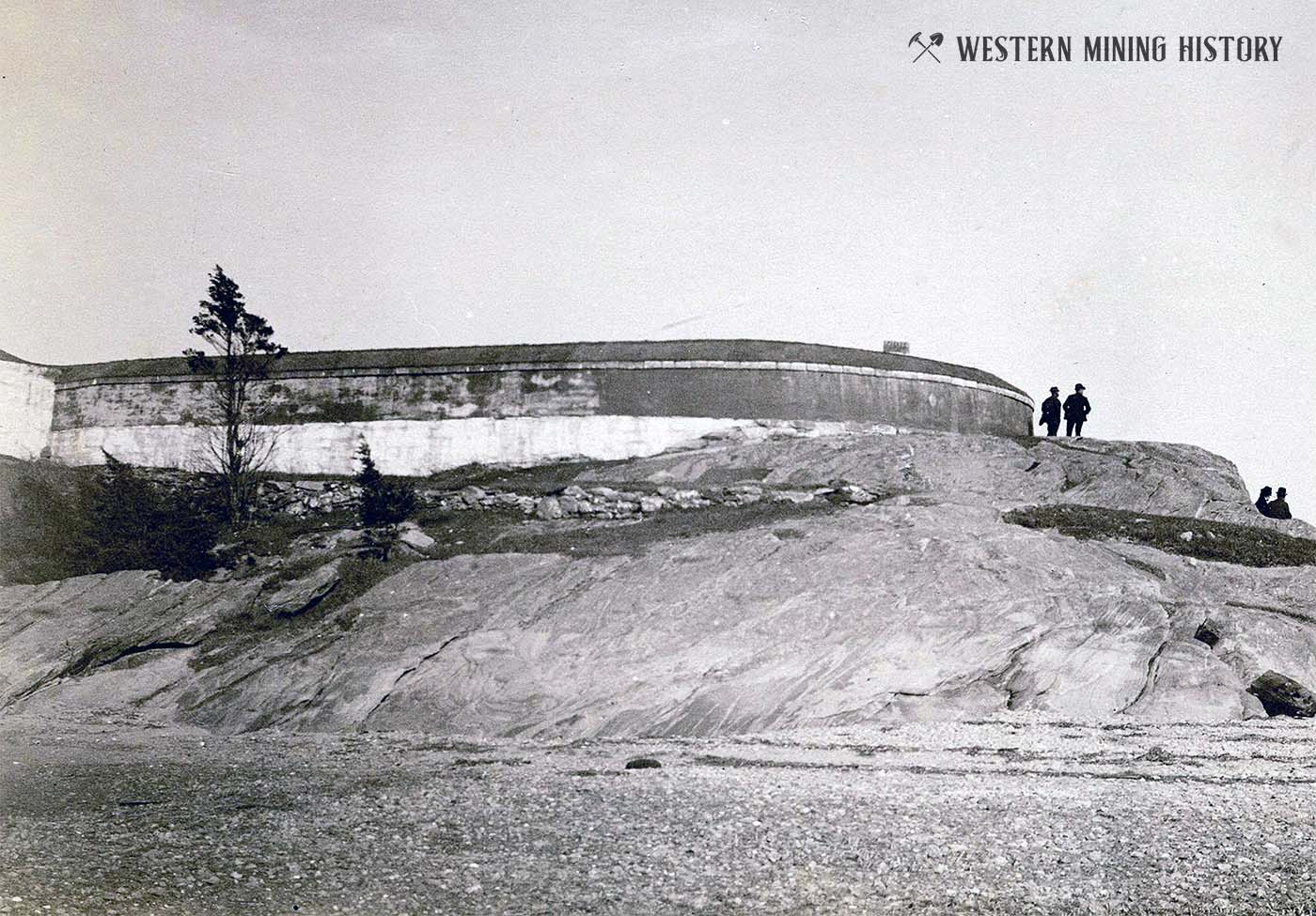
Candelaria was the largest settlement in Mineral County. During the peak of mining activity between 1881 and 1883, the town had a population of approximately 1500 residents, supporting various amenities like a bank, telegraph office, school, lumber companies, dry goods and furniture stores, two breweries, three doctors, lawyers, a newspaper called the "True Fissure," and more than two dozen saloons.
Despite its apparent prosperity, Candelaria was characterized by harsh living conditions, with scorching sun beating down on flimsy wooden structures and tents, while the prevailing hot, dry winds carried powdery dust from local mills. This challenging environment fostered a rough and unsavory reputation, earning the distinction of being one of Nevada's toughest mining camps. Local newspapers even brazenly boasted about the town's rough character, reporting, "No one killed or half-murdered during the past week."
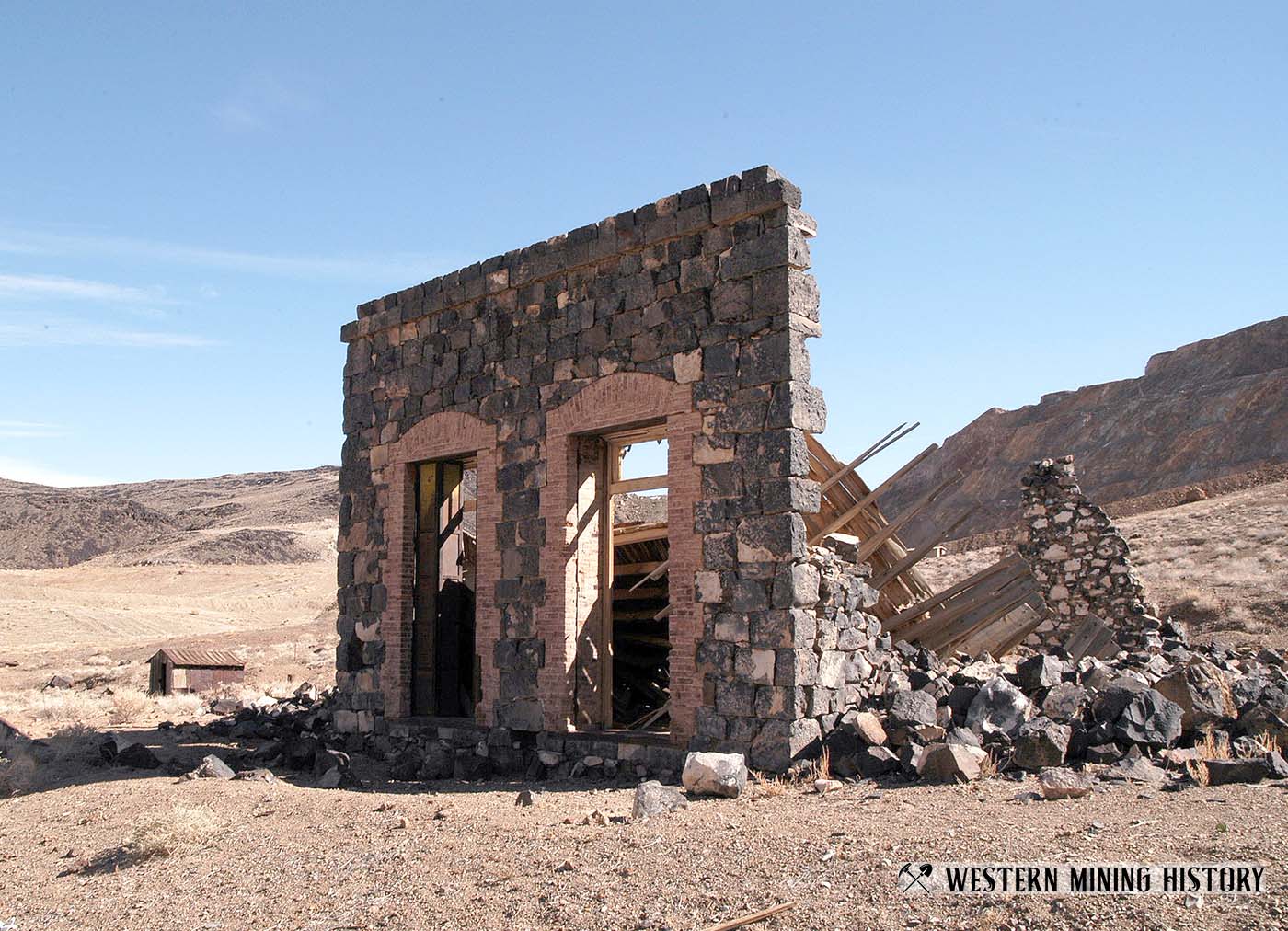
In February 1882, the Carson & Colorado Railroad reached Candelaria, offering newfound promise for prosperity with improved transportation and increased ore shipments from the Northern Belle mine. However, a fire in 1883 devastated a portion of the town, and legal disputes between the Northern Belle and the Holmes mines led to their consolidation in 1884. The following year, a prolonged strike at the mines resulted in a significant drop in production, and the local economy stagnated.
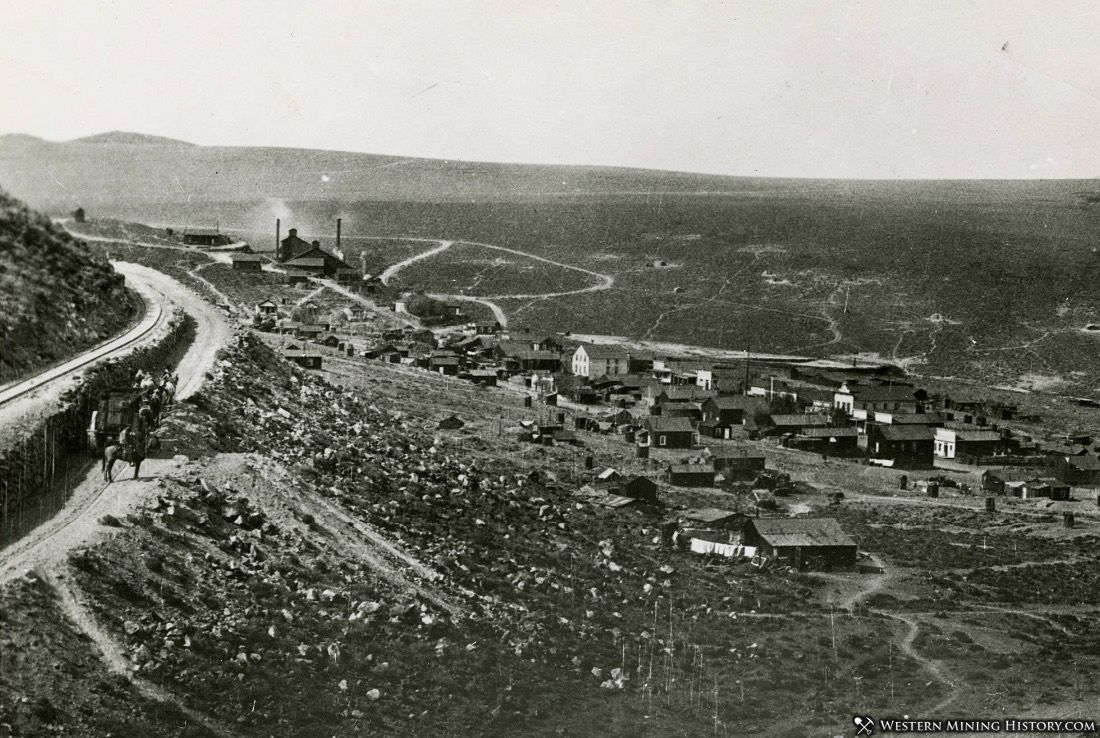
By 1890 the district was in a slump, but development work in the mines and improvements to the mills was being conducted in anticipation of a resurgence. An article from May 1890 noted that the current population of Candelaria was 600, the public school was flourishing, but there was not even one church in the entire county. The article gives a good overview of the state of the town that year:
The town of Candelaria has, until within two months past, had a long period of stagnation. At present it is quite lively and but few buildings are unoccupied. In all probability in another month, at the rate people are coming in, the demand for houses will largely exceed the supply.
Business houses have laid in large stocks in anticipation of brisk times this summer. Some lines of business are already overdone. For instance there are thirteen saloons, five restaurants, four general stores, one fruit store, one hotel, one lodging house, two blacksmith shops, one livery stable, one bank and last, but by no means least, the camp is to have a newspaper.
W. W. Booth will issue the first number of the revived Esmeralda News early in June. He informed me that the News will not be, as has been reported, simply a campaign enterprise sheet, but is intended to be a permanent newspaper in advocacy of the interests of Candelaria and Esmeralda county.
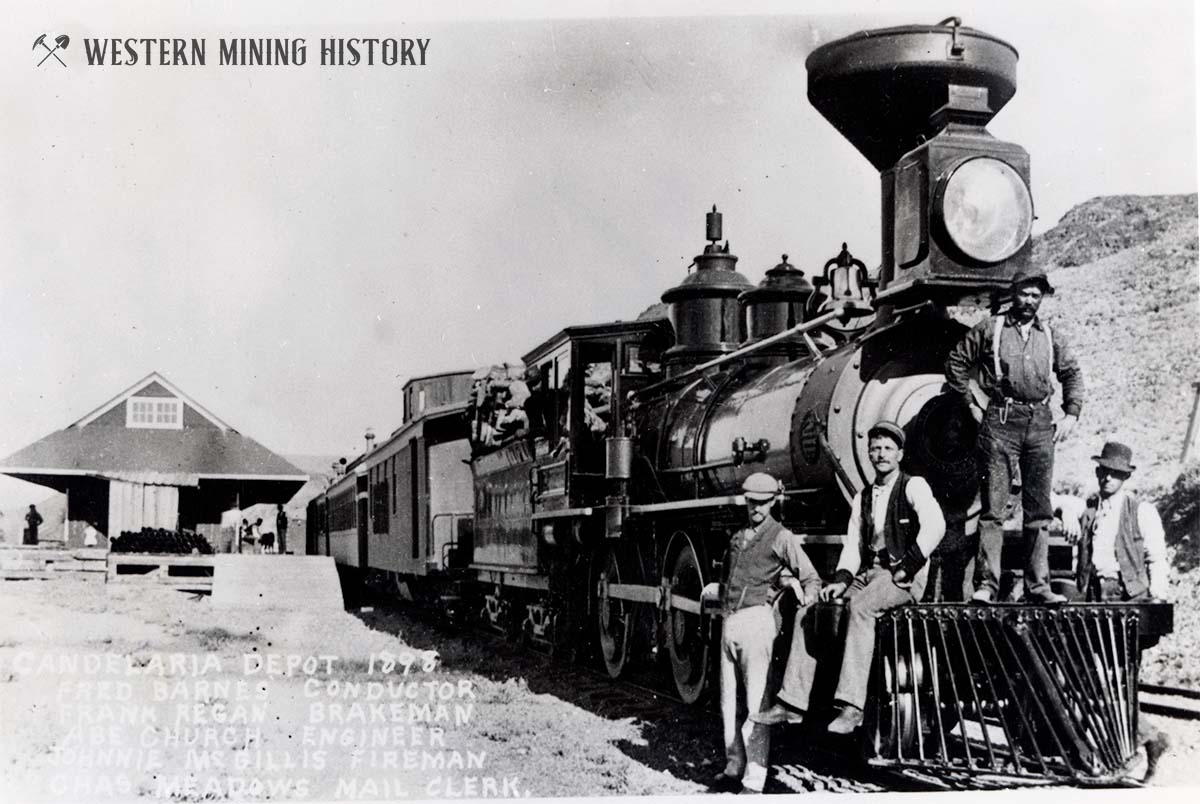
The optimism about Candelaria's future was dashed by the 1893 silver panic, which spelled the end for the district's prosperity. The mines eventually recovered from the 1893 downturn however, and continued to produce for many years. The town was not abandoned, although it was a shadow of its former self. The photo above shows that the railroad depot was still active in 1898.
A revival occurred in 1918 when the Candelaria Mines Company gained control over various properties, including the Argentum, Mount Diablo, and Lucky Hill mines, breathing new life into the district. However, by the 1930s the mines were once again idle, and in 1935 the Candelaria post office closed. Little remains of the town today other than stone foundations and a few crumbling walls of buildings.
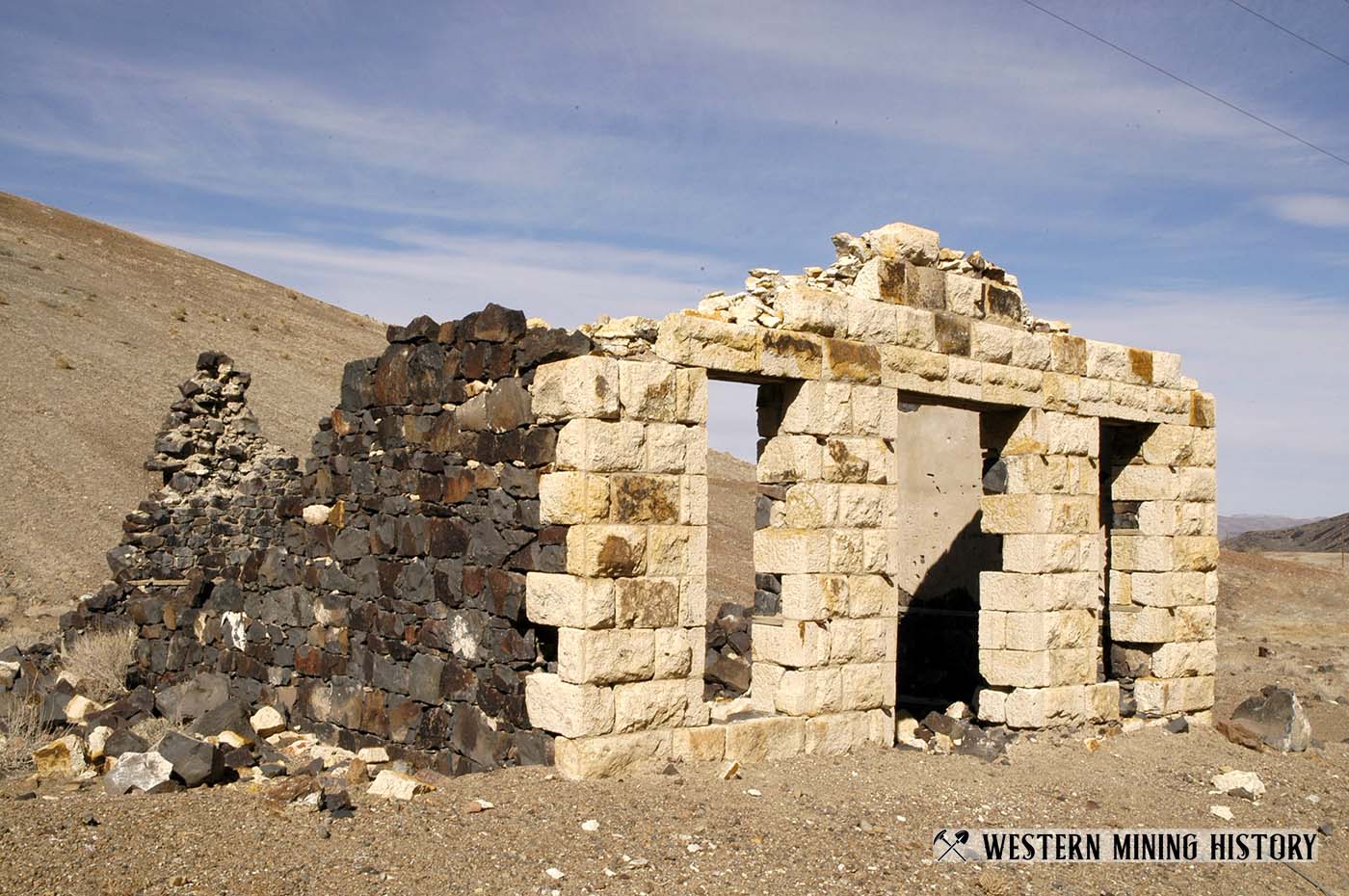
Production of the Candelaria District
The 1923 publication Mining Districts and Mineral Resources of Nevada summarized the production of the district:
The district produced about $20,000,000 in the early days, chiefly in silver. Of this sum, the Northern Belle produced about $15,000,000 and the Mount Diablo $4,000,000. Within recent years the U. S. Geolological Survey has kept statistics of the camp, which show that production of the from 1903 to 1920 inclusive, it produced 6,475.13 ounces gold, 1,021,867 ounces silver, 50,129 pounds of copper, and 653,982 pounds of lead, having a total value of $977,868.
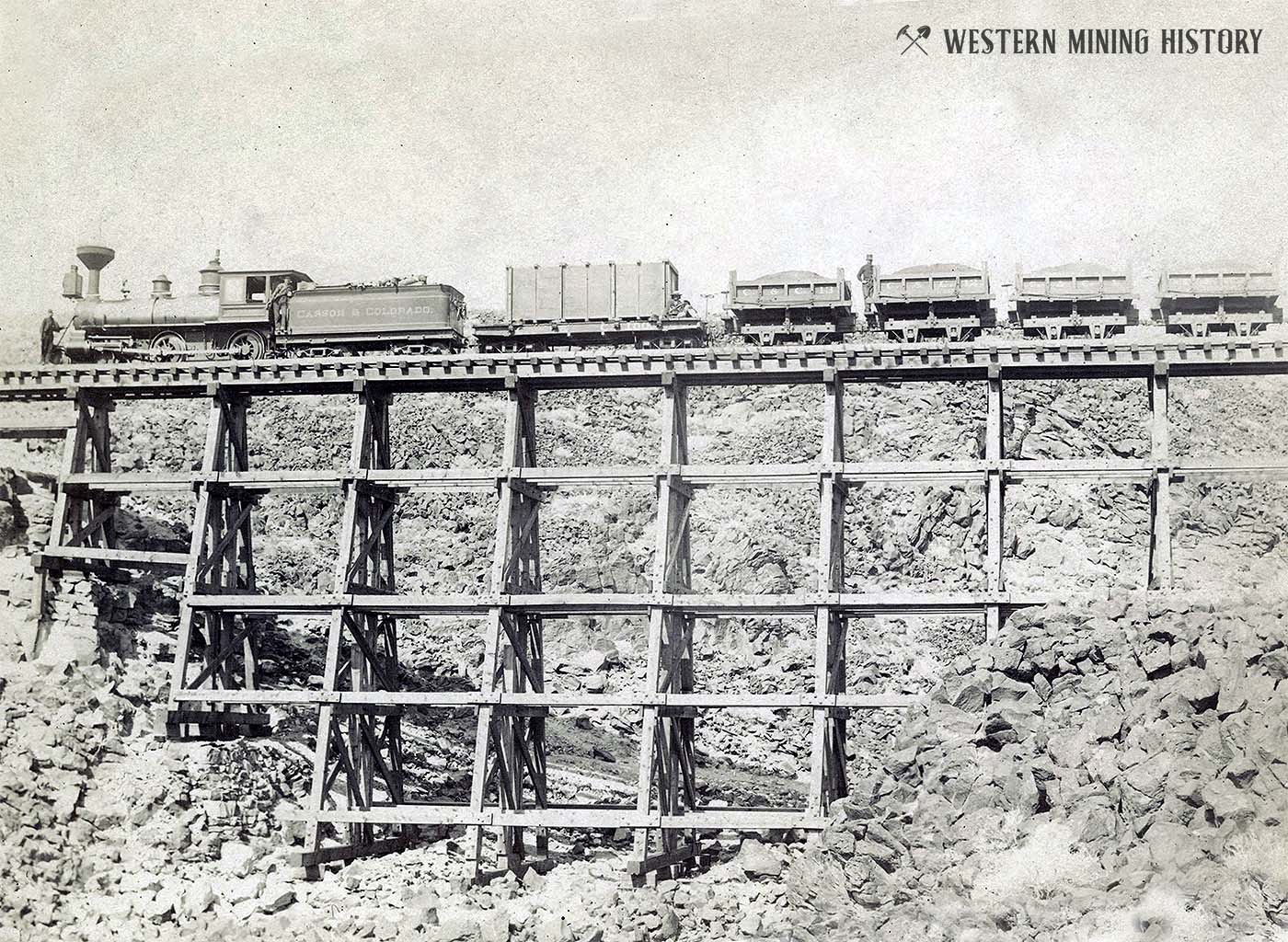
In 1882, 10 tons of high grade nickel ore were shipped to Swansea from near Columbus. In 1908, variscite and turquoise were discovered in the Candelaria Mts. and considerable amounts were shipped for gem purposes before the closing of the mines a few years later.
Nevada Mining Photos
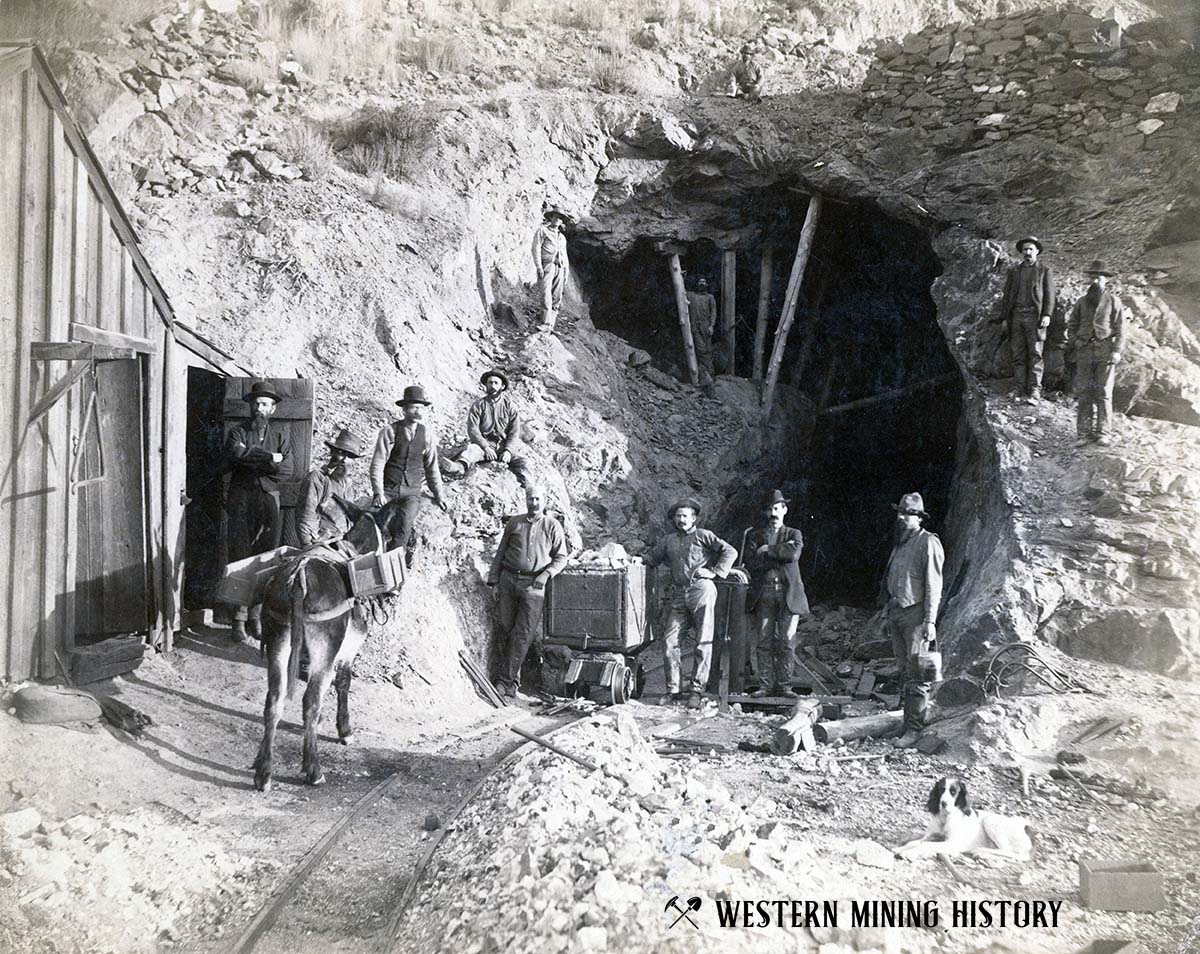
A Collection of Nevada Mining Photos contains numerous examples of Nevada's best historic mining scenes.
Nevada Gold

Nevada has a total of 368 distinct gold districts. Of the of those, just 36 are major producers with production and/or reserves of over 1,000,000 ounces, 49 have production and/or reserves of over 100,000 ounces, with the rest having less than 100,000 ounces. Read more: Gold Districts of Nevada.
